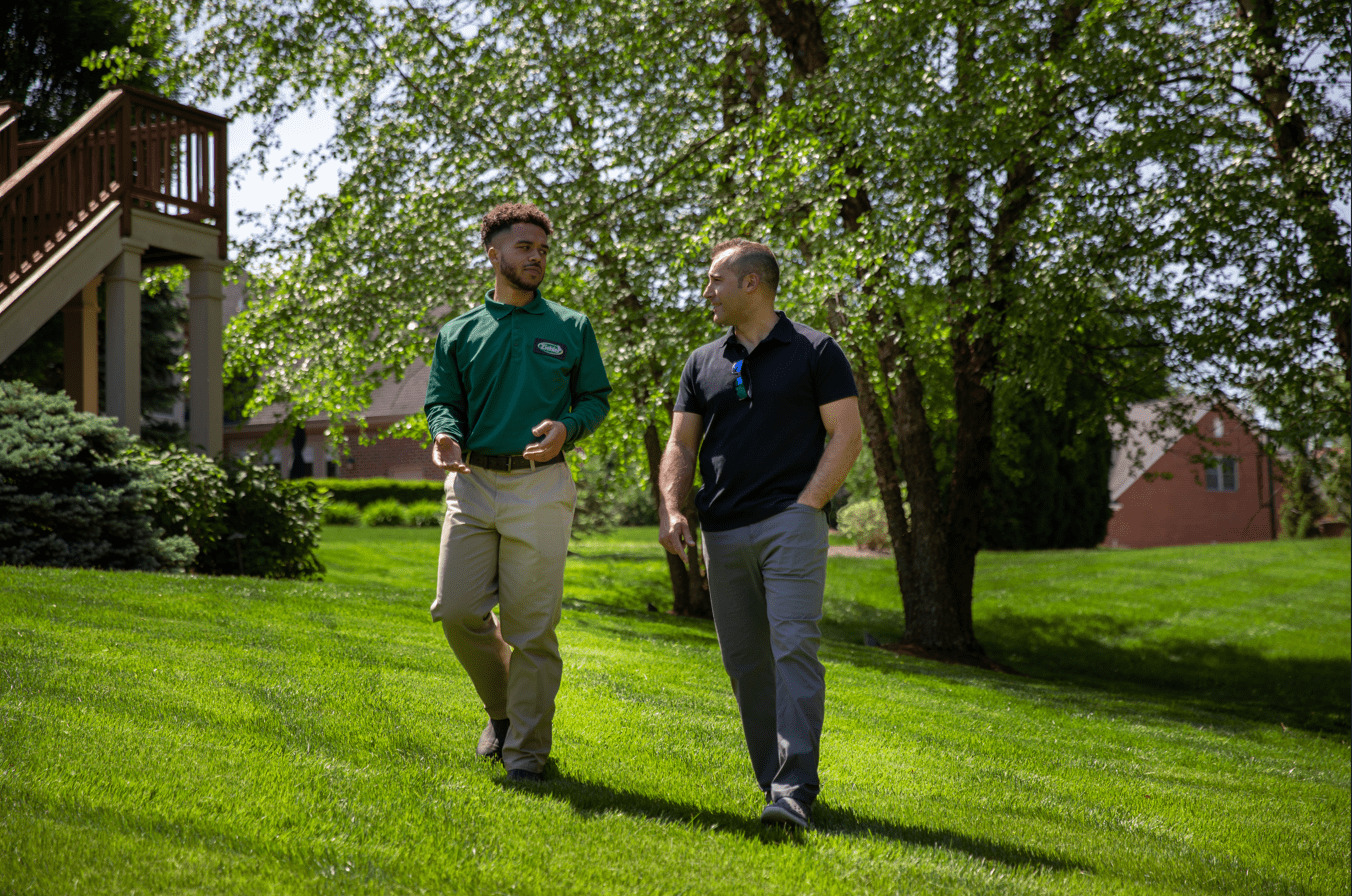
If your lawn care company doesn’t offer lawn maintenance services, it is truly a team effort to ensure your clients have the best-looking lawn.
While you can control weeds and pests to a certain extent, it always comes back to proper cultural practices. It can seem like common sense to you, but it’s important to educate your clients early and often about what they need to be doing on their end to keep their yards looking pristine.
Some of the ways you can share this information include having your account manager discuss it with the client once they’ve signed up for your services and in any welcome material you mail out.
Company newsletters sent to clients can also be a good vehicle for friendly reminders on proper landscape maintenance practices. Consider the timeliness of the topic. For instance, if your region is going through a drought, this is a prime time to reiterate how frequently lawns should be watered and signs of a lawn going dormant versus dying.
You can also cover practices you want to discourage customers from doing, such as burning their lawns in the spring.
Proper Mowing
Mowing can seem like just a chore to your customer base. Your job is to educate them on how mowing regularly ensures turfgrasses is receiving the right amount of sunlight, helping it grow healthier and greener. Mowing infrequently can result in the grass declining.
Help them understand that letting the lawn get overgrown and then cutting it too short is the fastest way for weeds and disease to spread as the soil becomes more exposed, providing opportunities for weed seeds to grow. Explain to your clients that scalping their lawn could result in a need for more weed control treatments throughout the season.
The specific frequency your customers’ lawns should be mowed will vary on the time of the year, type of turfgrass and the growing conditions. You can provide visual guides to show customers what a scalped lawn looks like, versus one where it’s a good time to mow as chances are most will not be going out with a ruler to see if their grass is 2 to 3 inches tall.
Also explain how they should not mow more than 1/3 of the grass blade at a time. This rule of thumb is because cutting more of the foliage shocks the plant and causes it to redirect its food resources from roots and stems toward new leaves.
It’s also important customers keep their mower blades sharp throughout the growing season as dull blades chew and fray grass blades, causing moisture loss and a weakened lawn.
If all of this sounds like too much work for your clients, you can always develop relationships with local landscape maintenance companies in your area you can refer to them. Do take care with who you offer as a referral because a bad experience with one of your recommended companies could reflect poorly on your own business.
Regular Watering
The other crucial task that your customer base must handle is watering their lawns. Just like mowing, a number of different factors impact each lawn’s water needs. Similar to mowing, the watering frequency should be as needed, not on a regular schedule.
Depending on the turfgrasses in your region, you can provide a general guide on how much water each species needs per week and encourage your clients to monitor rainfall levels to determine how much and how often to water.
Watering too frequently results in shallow rooting and diseases and weeds like yellow nutsedge and green kyllinga appearing.
Advise customers to water their lawns in the morning as irrigation will evaporate before it has been absorbed into the soil if they wait until the afternoon.
Signs of an underwatered lawn include the lawn turning gray and then blueish, footprints lingering in the grass for more than 30 minutes and dry and crispy turf.
Overwatering is just as much of, if not more, of a problem that you can encounter on properties. Your clients might have good intentions, but running their irrigation systems too often can result in an abundance of fungi, root rot and the eventual death of the lawn as they essentially drown it.
Mowing and watering can sound like simple tasks, but customers can make your lawn care efforts ineffective if they are not executing these practices properly.


